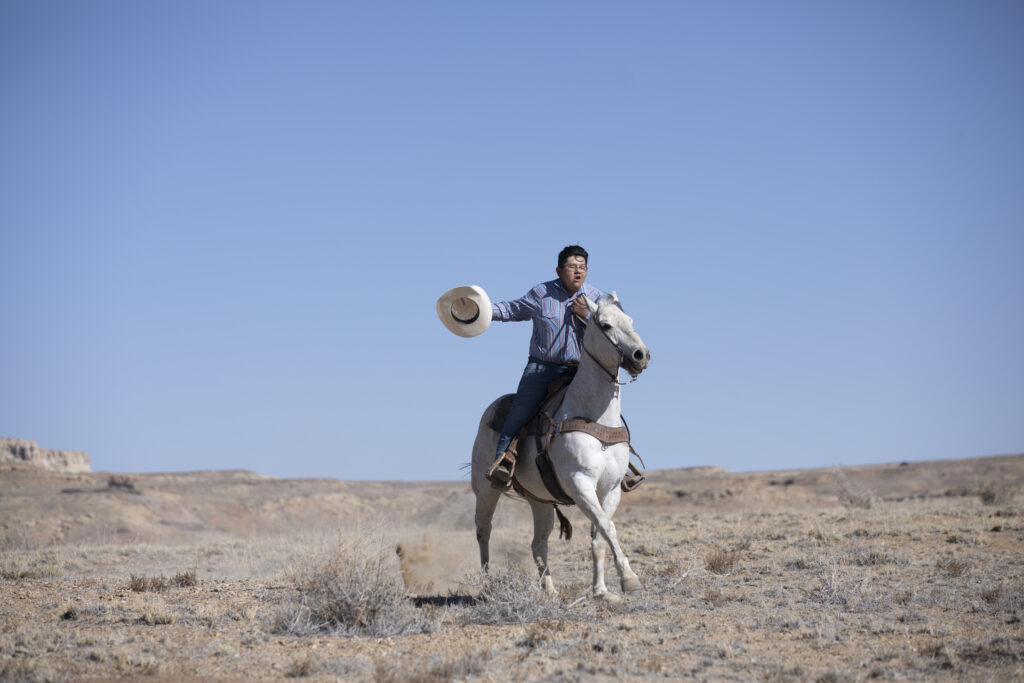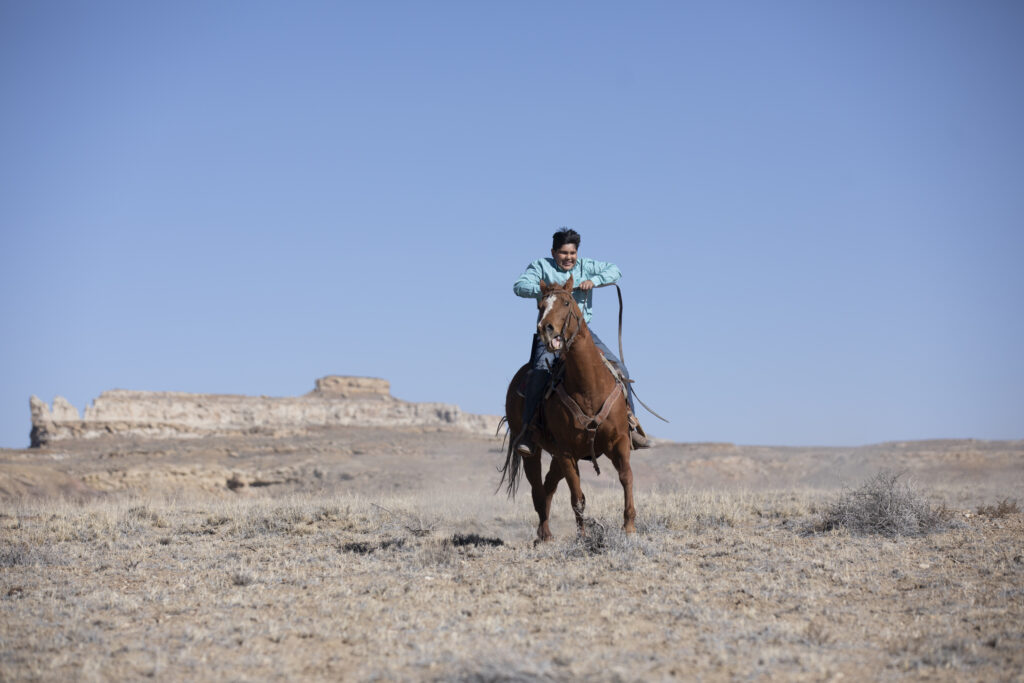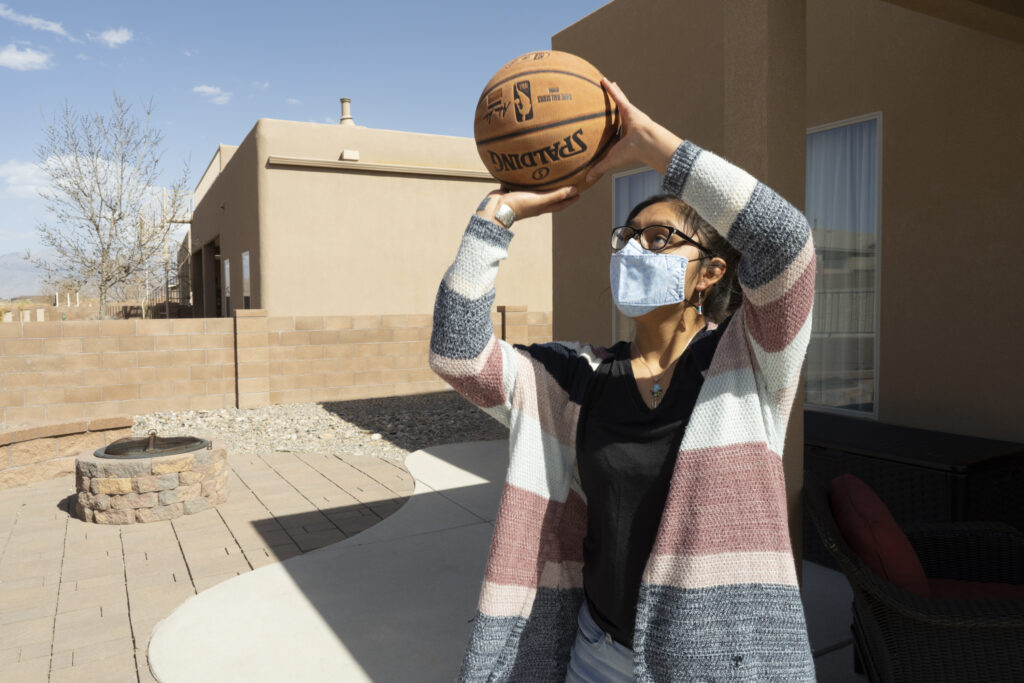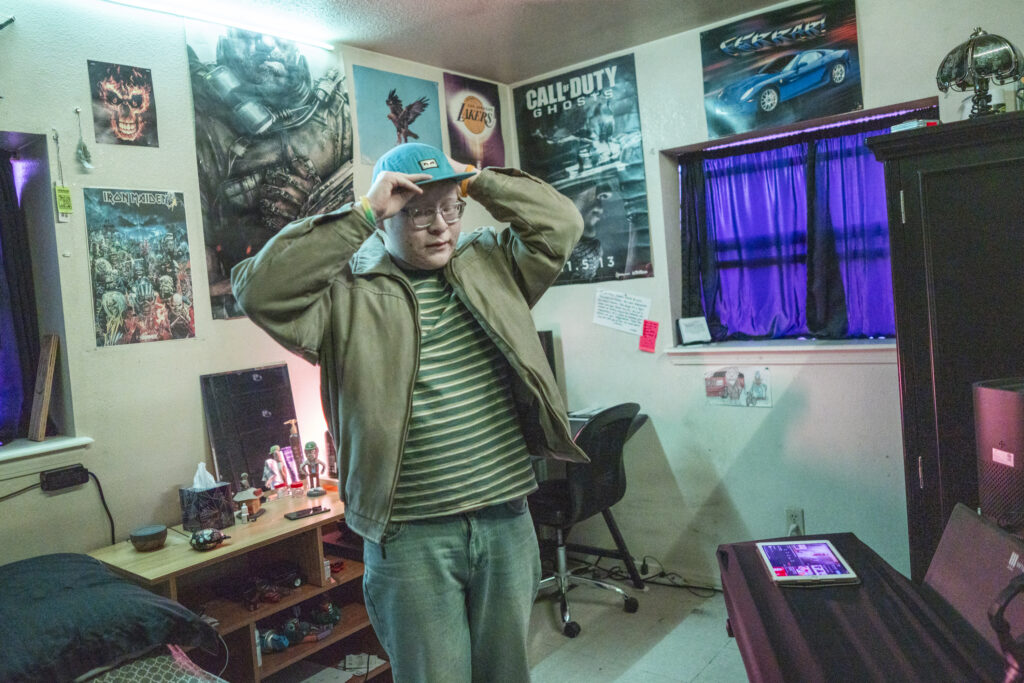This is the third in a series of articles that ask students in the region how they feel about school during the pandemic.
Today we hear from students from Zuni Pueblo and the Navajo Nation.
Photography by Don J. Usner and Curtis Ray Benally
Not far from the Shiprock pinnacle on the Navajo Nation, just as the sun rises, brothers Makai and Elishah Tsosie crawl out of their warm beds.
They rub their eyes, get dressed, drag their feet to the kitchen for breakfast and prepare for another day of learning in the family dining room.
Their mother, Philana Harrison, is up long before them. Just before she nudges the boys to get up, she places a phone call to Tsé Bit A’í Middle School to report that her sons — Makai, 14, and Elishah, 13 — will be present and accounted for. She’ll spend the rest of the day trying to help the kids with school while also working as a home health aide for her elderly father.
After breakfast, the brothers situate themselves at the table, in separate cubbies their mother put together. From about 9 a.m. to about 4:30 p.m., they attend online school.
Every school day for the past year has followed this same cycle — the morning phone call, the boys dragging their feet out of bed, and the evening homework sessions if either of them needs to catch up.
“It makes me feel lonely at times,” Makai, a seventh-grader, says. “We don’t really get to see anyone at all, and we’re just always stuck at home.”
Students everywhere are struggling with the emotional impacts of the pandemic due to the isolation — the worry about spreading COVID-19 to family members and the guilt if that occurs. Depression and anxiety have been so pronounced for young people that the CDC has issued alerts about the emotional toll. For Indigenous students, the toll might be even greater.
Many Native students live in remote areas with no internet access at home. Some live without basic necessities like electricity and running water, and many carry the weight of loss on their shoulders, having seen the virus rampage through their communities, families and villages, sometimes snatching family members one by one.
On the Navajo Nation alone, at least 30,267 people have tested positive for the coronavirus; 1,262 have died. And it is widely known that Indian Country as a whole has suffered disproportionately from the pandemic, due to government neglect and generations of inadequate health care. A recent CDC study found that the cumulative incidence of COVID-19 was 3.5 times greater for Native peoples than for whites.
Here is how some Indigenous students describe their experiences.
Makai Tsosie, Diné

“I feel that it’s really challenging, and it’s hard to just do my assignments by myself,” Makai says. “In fifth grade, we were taught to learn in groups and learn to work together, and not by yourself.”
When you’re in a brick-and-mortar classroom, “teachers teach your work to you — they work the problems out with you.” At home, he can’t get the same guidance.
And when his parents try to help, there’s still something missing. “Our parents don’t really remember how to do certain assignments that we’re doing.”
He misses organized sports — he was a member of the basketball team, for one. To fill the void, he’s spent a lot of time practicing his calf roping by using two roping dummies outside the house.
“When I look at other kids from off the reservation, they really involve themselves in sports and can still play because they have places to do that. We don’t. Our friends live far away, and we don’t have a place to go.”
For most Navajo kids, the reservation is a dirt playground. Kids don’t have access to basketball courts because most are in school gyms — and schools are locked. Most kids don’t have cement driveways, paved streets or grass fields to practice sports. And they can’t play in nearby parks — there typically are none.
Making matters far worse, Makai lost an uncle to the virus, a relative who encouraged him to keep up with his schoolwork and helped him practice roping. After his uncle’s death, Makai started sleeping more and fell behind in school. As with many Navajo kids, his extended family was just as important to him as his immediate family.
The pandemic brought his family closer, he says. “One good thing is us as a family being together a lot, being at home with each other more. … Before this pandemic, we were never at one place at one time. I feel like we have grown together more and loved one another just that much more.”
Elishah Tsosie

Elishah, a sixth-grader, says he misses his mom being just his mom — and not his teacher. Like his brother, he also misses being in a real classroom, where teachers give step-by-step instructions. “My mom, she kind of just explains it like one or two times and she’ll leave us on our own.”
After school — the best part of the day — he likes to ride horses. And he’s started learning how to make Navajo jewelry, along with his brother.
But he misses his friends. Sometimes he sees kids on television or in public who are visiting a crowd of family and friends, and he wishes he had that luxury. But he’s learned that he can’t do those things on the reservation. It’s too dangerous.
“My experience is different,” he says. “I want to stay home because I don’t feel like getting the virus.”
Thalia Lee, Diné

At least three times a week, 15-year-old Thalia Lee is up at 5 a.m., getting ready for a long day of both high school and college online learning.
She’s up early to do chores and sometimes to exercise, then she eats breakfast just before logging in to classes at Volcano Vista High School in Albuquerque, where she’s a sophomore. Later in the day, she switches to her classes at Central New Mexico Community College. Her evenings are dedicated to homework and then it’s time for bed at 8 p.m.
“Sometimes before I go to sleep, I’m like, I don’t even know how I’m going to get all this done. Sometimes crying is my own way of coping with my stress.”
She doesn’t have to be a dual-credit student, taking both high school and college classes, but she wants to become a doctor, a goal she’s had for a very long time. As an Indigenous student, she says she has to work twice as hard to succeed. She also puts in more work because she’s a kinesthetic learner, someone who learns best through hands-on experience.
“For science, I learn through watching someone do it and then I do it myself.” That includes working with chemicals on her own for chemistry class — “a very hard subject,” she adds. “I don’t know if I’m really learning anything. Sometimes I really doubt myself on how much I know, but I also surprise myself.”
Adding to her worries and stress, Thalia contracted COVID-19 late last year and says she spread it to her immediate and extended family. Though no lives were lost, she carries the guilt with her daily.
The adults got more ill than she did. “That’s why I felt bad. I felt kind of guilty, and I blamed myself. It made me realize how bad COVID really is.”
Geoffrey Hughte, Zuni Pueblo

Around this time last year, Geoffrey Hughte, a junior at Zuni High School, reveled in the idea that spring break was prolonged because of the pandemic. The 17-year-old looked forward to hanging out with friends and practicing his driving skills. But the amusement didn’t last long: The virus triggered stay-at-home orders, and the isolation turned out to have no end.
“Life just slowed down drastically. I knew it was something that was really scary. … There were parts where it honestly didn’t feel real. I lost my uncle on my dad’s side and a few others in my extended family.”
The added difficulty came with realizing that he and his family had little to no control over what might happen if they were exposed to the virus. Everything “was just really confused,” both globally and all around him. “We had our own personal struggles, and [the virus] added to the complexity of what was already going on in the world.” In addition to worrying about finishing homework and maintaining friendships, he had to worry about how COVID-19 was spreading and who would be the next to succumb.

He spent most of the past year in his room, tending to schoolwork and watching YouTube videos, which offered an escape from his small rural Pueblo. He lives in a multi-generational home and his mother works in the health-care field, which at times causes added stress and worry.
“It was scary because we actually had to quarantine ourselves, too. My mom goes to Gallup for work, and she works with elder people.” He began telling her “just be careful” before she went to work, and he still does. Thankfully, he adds, “nothing has ever happened to her.”
Managing schoolwork got more difficult as the pandemic wore on. Like many of his peers, he says he reached a breaking point and felt overwhelmed by the isolation and turmoil. “After being locked up for so long, it starts to get in your head a lot. I went into a little depression over the summer, and I felt like a lot of people did, too.”
Some students turned to drugs or alcohol to cope, but he remained focused on his studies. “Sometimes you feel like it’s hell, but it’s just the moment that has a grasp on you,” he says. “You can’t let it get a hold of you. You just have to realize it’s just in that moment, and it will pass.”
Sunnie R. Clahchischiligi is a multi-award winning Diné journalist from Teec Nos Pos, Ariz. She was the sports writer for the Navajo Times for over 10 years. Her work has appeared in The New York Times, Sports Illustrated, the Salt Lake Tribune and others. Sunnie is also a Ph.D. student in rhetoric and writing at the University of New Mexico and a core writing instructor. She has a master’s degree from Northern Arizona University in rhetoric, writing, and digital media studies. She is a fifth-generation Navajo rug weaver.